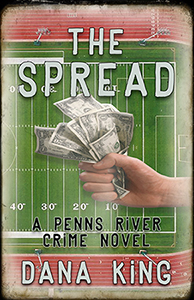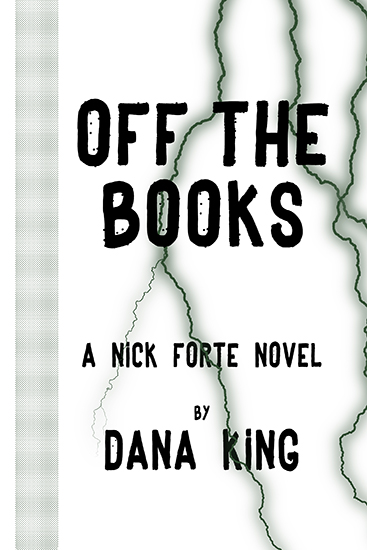I’ve told my favorite
Bouchercon story here more than once. My second favorite Bouchercon story
took place in Cleveland. The Beloved Spouse™ had made me a long-sleeve black
T-shirt with “WWASD” on the left breast and “What Would Al Swearengen Do?”
across the back. I was at the bar waiting for a drink when I felt a hand on my
shoulder. I turned to see a guy I’d never seen before. First words out of his
mouth? “I want that shirt.”
And so was born my enduring friendship with Tim O’Mara. I didn’t
know he was a writer at the time, so it was doubly tickling to learn how good
he was once I got a look at his Raymond Donne books, crime fiction tales
starring a former policemen who now teaches in the Williamsburg section of
Brooklyn. We share a love of baseball, have both worked in public education
(Tim retired a few years ago), and share many warm thoughts about the 1960
World Series. (Tim because the Yankees won their three game by scores of 16 –
3, 10 – 0, and 12 - 0; me because the Pirates won the Series on Bill Mazeroski’s
home run, still the only seventh-game walk-off in over a hundred years of Series
play.)
Tim’s more than a good friend and outstanding writer: he’s a
man of conscience. This comes through in the topics he takes on in his Raymond
Donne books, and even more so in the anthology
that dropped today, Down
to the River, in which I am flattered to have been asked to
participate.
Tim took time form his hectic schedule to answer a few questions.
One Bite at a Time:
Tell us a little about Down to the River.
What can we expect?
 Tim O’Mara: With Down to the River the reader can expect
to be exposed to some rather diverse voices in crime fiction. Some of the
authors have been around for a while, others are some of the hidden gems in
crime fiction, and a few are first-timers. I also want the reader to come away
with an appreciation for America’s waterways, not only as great locations for
crime fiction but as the precious and fragile natural resources they are.
Tim O’Mara: With Down to the River the reader can expect
to be exposed to some rather diverse voices in crime fiction. Some of the
authors have been around for a while, others are some of the hidden gems in
crime fiction, and a few are first-timers. I also want the reader to come away
with an appreciation for America’s waterways, not only as great locations for
crime fiction but as the precious and fragile natural resources they are.
OBAAT: The
authors all donated their stories for the benefit of American Rivers.org. What’s
the deal with them and what brought them to your attention?
TO: American
Rivers educates the public about our waterways and the threats they currently
face. The current administration has done away with lots of regulations that
protected our rivers. Americans should be more informed and involved in this
and understand that this affects all Americans regardless of political
affiliation. American Rivers helps make that happen. They also lobby to keep
the protections we have for out rivers in place.
OBAAT: What’s the
hardest part about pulling together a project such as this?
TO: This was my
first time editing at this level. I worked with twenty-two other writers to
help make their stories better. I had to be very careful that any edits I
suggested were presented respectfully and in the spirit of improving the story.
I also needed to be mindful of not rewriting anything because that’s the way I
wanted it to be written. Every single author was appreciative and more than
willing to make this the best anthology it could be. (Maybe the best anthology
ever?)
OBAAT: All you
told the authors was that a river had to be involved somehow in their story.
How broad a range of stories did you get and how geographically diverse were
the rivers in your stories?
TO: The diversity
of writers and their stories is the thing I am most proud of with Down to the River. Just like every river
has its different twists and turns, so does every story in this book. I could
have easily had two dozen stories about the Hudson River—blocks away from my
home in NYC’s Hell’s Kitchen—but I believed it would be much more interesting
to learn about other rivers and other parts of the country. I was right. I not
only received crime stories, I got a few science fiction pieces, some fantasy,
and a touch of horror. A good book should surprise the reader; I didn’t know it
was going to surprise the editor.
OBAAT: How did
you decide who you wanted as contributors and how hard was it to get them to
sign on?
TO: Again, I
wanted as much diversity as I could get. I asked writers I knew from Bouchercon
and Thrillerfest and other conventions. I knew a lot of the writers’ works
before asking them to contribute, but some I just had to trust. I have two
writers—Marcie Rendon and Maria Kelson—who were recommended by another author
who was too busy to contribute. Again, what a nice surprise and I believe I made
two new friends in the process. Every writer who contributed said Yes pretty
quickly and made that part of the process smoother than I could have hoped.
OBAAT: What part
of molding the anthology did you enjoy most?
TO: Working with
the authors was as much a learning experience for me as I hope it was for most
of them. Some stories needed a period here and a comma there while others
needed more work. “Molding” is a good word, Dana. The stories were all
effective when I received them; my job was to chip away where needed and add
when I wanted more. The process taught me a lot about my own writing and
self-editing skills.
OBAAT: You can’t
leave here without me asking you if there are any Raymond Donne books on the
horizon. I miss him.
TO: Yes! I’m
currently working on my fifth Raymond Donne book, The Hook. This time around I’m tackling some smaller issues: White
Nationalism and the opioid epidemic in America. I’m also putting in some a
Ray’s journalist girlfriend’s pieces. That’s new for me as all the Raymond
books are in the first person. I wanted to do something different to keep
myself—and I hope my readers—more interested in the series.



No comments:
Post a Comment